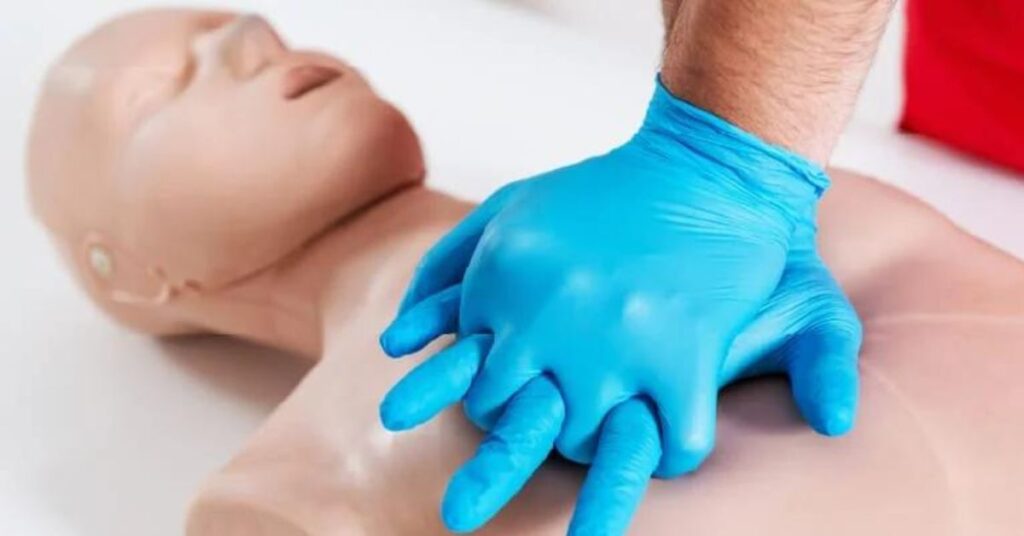Basic Life Support is an important set of lifesaving skills that everyone should possess. People who complete BLS training are better able to handle cardiac arrest, choking, and other potentially fatal situations. Being prepared for unanticipated events in the modern world is key to rescuing someone’s life. Gaining proficiency in BLS enables you to respond promptly and confidently, thereby saving lives until professional help arrives.
What is BLS?
Basic Life Support (BLS) refers to the foundational set of lifesaving techniques used in medical emergencies. It prepares you to act until professional medical help arrives. The primary component of BLS is CPR (Cardiopulmonary Resuscitation), encompassing chest compressions and rescue breaths for adults, children, and babies. Methods vary somewhat for each age group. Knowing how to operate a portable Automated External Defibrillator (AED), which can restart a stopped heart, is another essential step. The key is to identify cardiac arrest: seek out an unresponsive, non-breathing, pulseless person. BLS empowers you to take action in these critical moments.
Why is BLS important?
BLS training isn’t merely a checkbox to tick; its purpose is to equip you with the ability to save lives. Every second counts when someone’s heart stops beating; their brain and organs require oxygen. Proficiency in BLS enables you to intervene before professional assistance arrives. Here’s why BLS is paramount:
- Increases Survival Rates: Research indicates that CPR significantly increases survival rates. Prompt CPR may restore the heart, keeping blood and oxygen flowing.
- Improves Brain Function: When the heart stops, the brain gets no blood. Early CPR keeps some blood flow going, limiting potential brain damage.
- Empowers Bystanders: Anyone who receives BLS training prepares to react.. Medical training is not required. With BLS skills, you can take action.
- Boosts Confidence: CPR and AED use increases confidence. You’ll feel calm and composed in an emergency. One life could be saved by your prompt action.
Master BLS in 7 Steps
Learning Basic Life Support (BLS) skills is vital. It can help you save lives. Here are the steps to master BLS. You’ll gain confidence in handling emergencies.
Step 1: Enrolling a BLS Training Course
It is essential to enroll in a BLS Training course that has received accreditation from a reputable organization. These expert-designed courses teach life-saving techniques. Depending on the provider, the duration can range from a few hours to a day, and costs may fluctuate. Choosing a respectable course ensures you receive correct and relevant information.
Step 2: Pre-Course Preparation
Obtaining course materials in advance would be beneficial in order to familiarize oneself with the material. You will learn and remember the material in the BLS Training class more effectively if you do this first step.
Step 3: Learn the Chain of Survival
One essential concept in BLS training is the Chain of Survival. It comprises four main components: early advanced care, early CPR, early defibrillation, and early access to care. Each connection significantly contributes to increasing the likelihood of survival for a person experiencing cardiac arrest. Your lifesaving efforts may be much more successful if you understand and adhere to the Chain of Survival.
Step 4: Master Adult CPR
You will receive instruction in adult CPR during your BLS training. Checking for response, calling for help, and commencing chest compressions right away are all part of this process. Effective CPR requires proper hand placement, compression depth (at least 2 inches), and pace (100–120 compressions per minute). You will also learn how to perform rescue breathing by tilting the head back and sealing the mouth. Gaining the required abilities and muscle memory will come from practicing on adult manikins.
Step 5: Learn Child and Infant CPR
Though the fundamentals of CPR never change, the methods for children and infants differ slightly from those for adults. In BLS Training, you will learn age-appropriate adaptations, such as compressing infants with the heel of one hand and modifying the depth and pace appropriately. Getting practice on toddler and baby manikins is important for being able to conduct CPR on younger patients with assurance.
Step 6: Understand AED Usage
The Chain of Survival relies on an automated external defibrillator (AED). You will receive instruction in operating an AED, which uses visual and audio cues to guide users through the defibrillation procedure, during BLS Training. Carefully following these instructions and not hesitating to use the AED when needed are important. Someone experiencing cardiac arrest has a much better chance of surviving with early defibrillation.
Step 7: Practice and Maintain Skills
Like any skill, CPR and AED use require constant practice to become proficient. You can reinforce your BLS training and ensure you are ready to react appropriately in an emergency by taking refresher classes and practicing at home using manikins or online tools.
Wrapping Up
Learning BLS equips you with priceless lifesaving abilities. The course will equip you to act quickly in an emergency. You’ll learn CPR, AED operation, and other lifesaving skills. Don’t hesitate to respond – your actions could save a life. Share what you’ve learned with others and urge them to get BLS training as well. When everyone prepares, we all contribute to a safer community.







